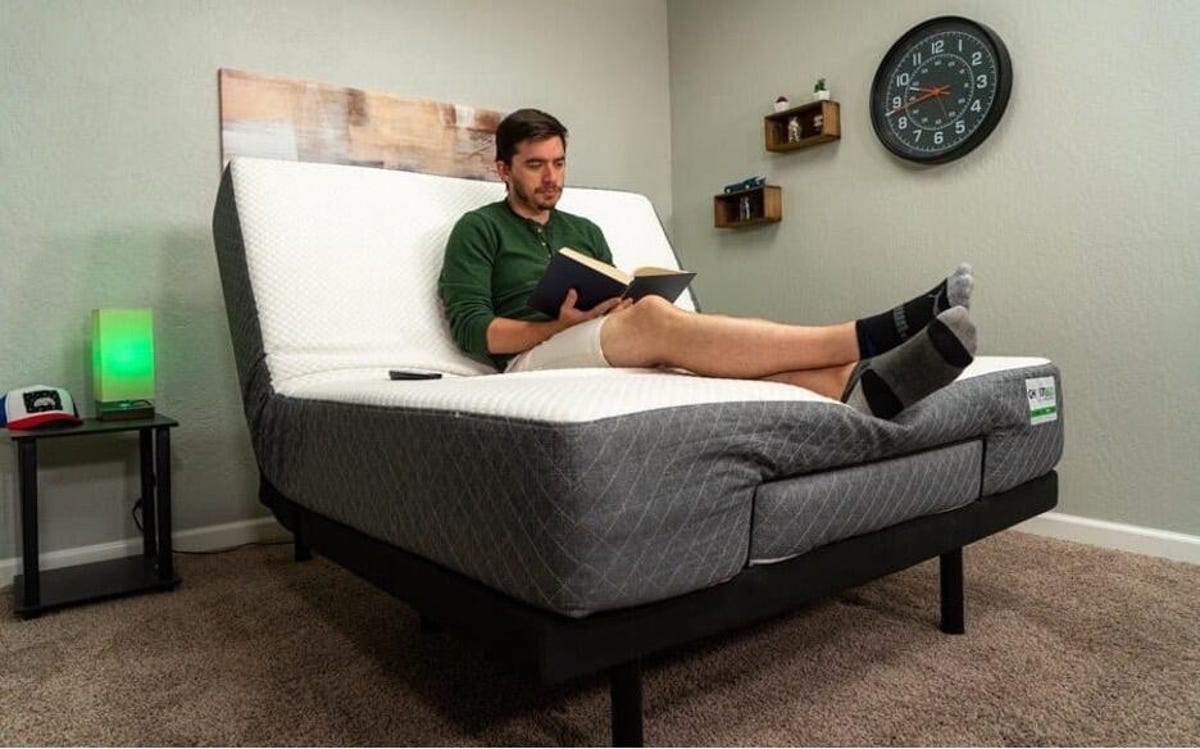What position do you feel most comfortable sleeping in? There are three primary sleeping positions: side, stomach and back — though some can be a combination of these. In 2019, a study that involved more than 3,700 volunteers concluded that only 7% of people sleep predominantly on their back, a stark contrast to the 54% of people who favor sleeping on their side.
However, what if back-sleeping had real, tangible evidence that it’s better for you? Would you give it a try? It turns out there are many benefits to back-sleeping as it has a long list of benefits, ranging from reducing physical pain to preventing wrinkles and pimples.
Don’t worry, it’s never too late to train yourself to become a back sleeper, but it will take effort to accomplish. Becoming a back sleeper may not happen overnight, but it’s worth a shot if you want to reap its benefits. Find out below how sleeping on your back can improve your health and the steps you can do to make the switch.
The benefits of back sleeping

Back sleeping has been praised as the ultimate sleeper position, and for good reason. It can do wonders for your body, face and overall health.
- Prevent back and neck pain: The key to preventing back pain while you sleep is ensuring your spine, neck and head are all in proper alignment — one straight line, if you will. Back sleeping on a firm mattress can promote a neutral alignment, relieving pressure on your back and spine. A 2017 study revealed that sleeping on your back with your arms resting on the side or your chest is the best position to relieve pain.
- Prevent acid reflux and clear up your sinuses: Sleeping with your head elevated above your heart helps prevent the build up of mucus in your sinuses, and relieves symptoms for those who experience acid reflux by preventing the exposure of acid to the esophagus.
- Reduce tension headaches: Headaches that originate from the neck or cervical spine can be confused with migraine headaches, and often happen because of compressed nerves in the neck. Back sleeping helps relieve pressure on your neck, similar to how back sleeping prevents back pain.
- Prevent wrinkles and blemishes: Sleeping on your stomach with your face down can have an undesired effect on your appearance. The compression and pinching of your face against your pillow can lead to wrinkles and fine lines, and the same thing goes for your neck. Additionally, your pillowcase is a hub for bacteria and sebum which can lead to breakouts.
- Prevent puffiness in your face: When you sleep face-down on your pillow, fluid can collect in the tissues of your face resulting in swelling, puffiness and under-eye bags. Sleeping face-up on your back with your head elevated ensures the fluid is properly drained out.
When you shouldn’t try back sleeping
Back sleeping is typically the best for your health, unless you fall under these exceptions.
How to train yourself to sleep on your back
Pillow placement is key
Use pillows to your advantage to help train yourself. You should have a pillow with medium loft (height) to keep your head propped up, a pillow under your knees and a pillow under your lower back. This helps support the natural curvature of your body and relieve pressure.
You can also create a pillow fortress to surround your whole body. It can prevent you from changing into a new position, and make you feel so cozy that you don’t even feel the need to roll around.
Properly elevate your head
To elaborate on step one, your pillow should keep your neck in a slight “C” curve to help reduce pressure on your neck and head. If you’re staring straight up at the ceiling, your pillow isn’t tall enough. If you’re fully facing the wall in front of you, your pillow is too tall. The perfect back-sleeping pillow will be somewhere in between.
Make sure your bed is firm enough
Back sleeping on a soft mattress is a recipe for back pain. A soft mattress lacks the support to keep your spine and neck in a neutral alignment, allowing your back to sag into the bed. Instead, try a firm mattress or firm mattress topper to make your bed feel more accommodating.
Try an adjustable bed frame

An adjustable bed frame that allows you to move the head and foot positions up and down can keep you in a comfortable sleeping position, while also discouraging you to switch to your side or stomach.
By raising your head above your heart and slightly raising your feet, you go into a “zero gravity” mode, and it relieves pressure from all parts of your body — like you’re floating in space (hence the name). The positioning also prevents you from moving into an uncomfortable position on your side or stomach.
Consider the starfish position
If you’re a single sleeper, your bed is your oyster and you can do as you wish without bothering a co-sleeper. In that case, lay with your legs and arms spread out and stretched each way like a starfish. You’re able to evenly disperse your weight to prevent the build-up of pressure, and people who have tried it swear by it.
Mind your late-night meals
As tasty as pizza and hamburgers are, try to refrain from eating heavily fatty foods too close to bedtime. If you eat dinner less than 2 hours before you plan to go to bed, you may feel an uncomfortable pressure on your belly when you try to sleep face-up.
The information contained in this article is for educational and informational purposes only and is not intended as health or medical advice. Always consult a physician or other qualified health provider regarding any questions you may have about a medical condition or health objectives.
Mattress Buying Guides
Preference
Mattress Reviews
Other Sleep Guides
Bed Accessories
Sleep Tech
You Can Help Curb Pain, Pimples and More by Sleeping in This Position – CNET
Source: Media Star Philippines


0 Comments